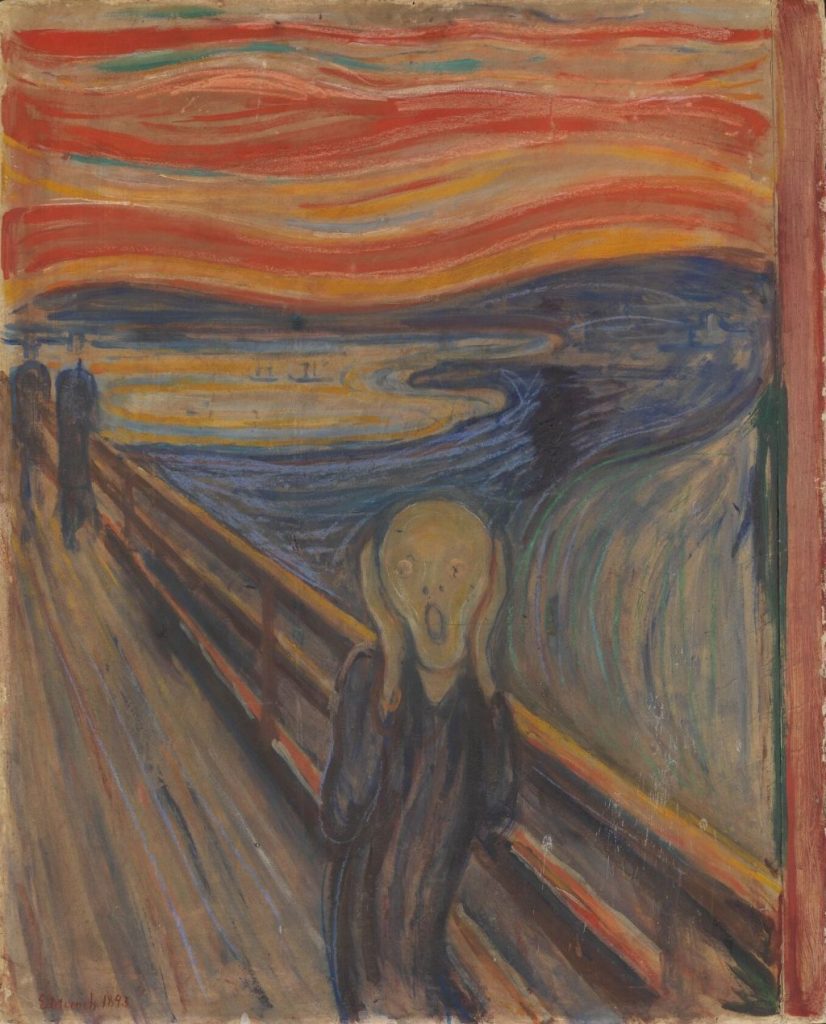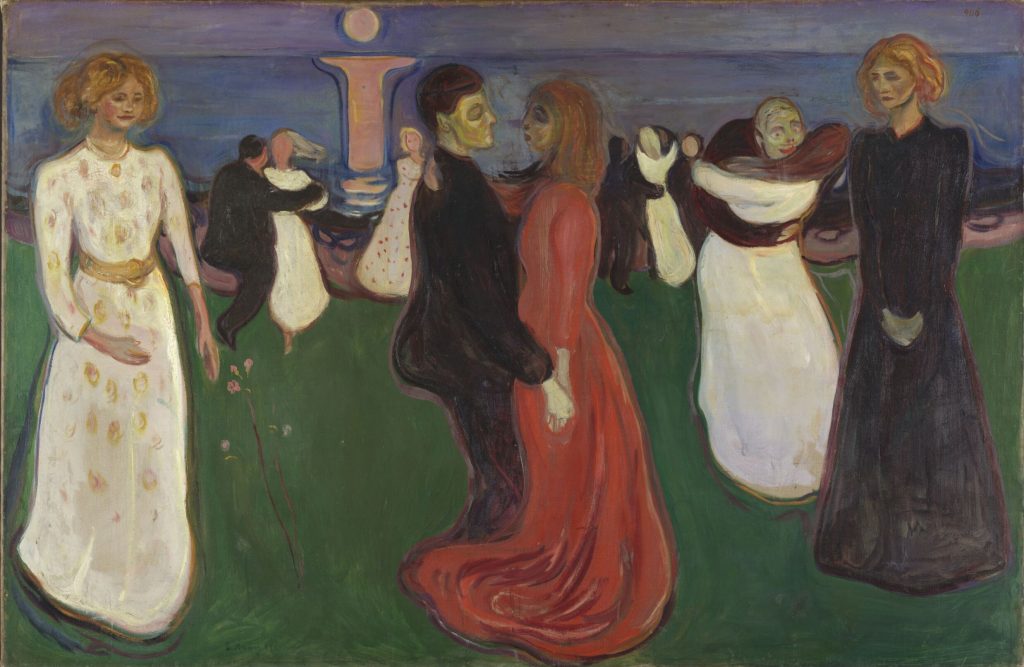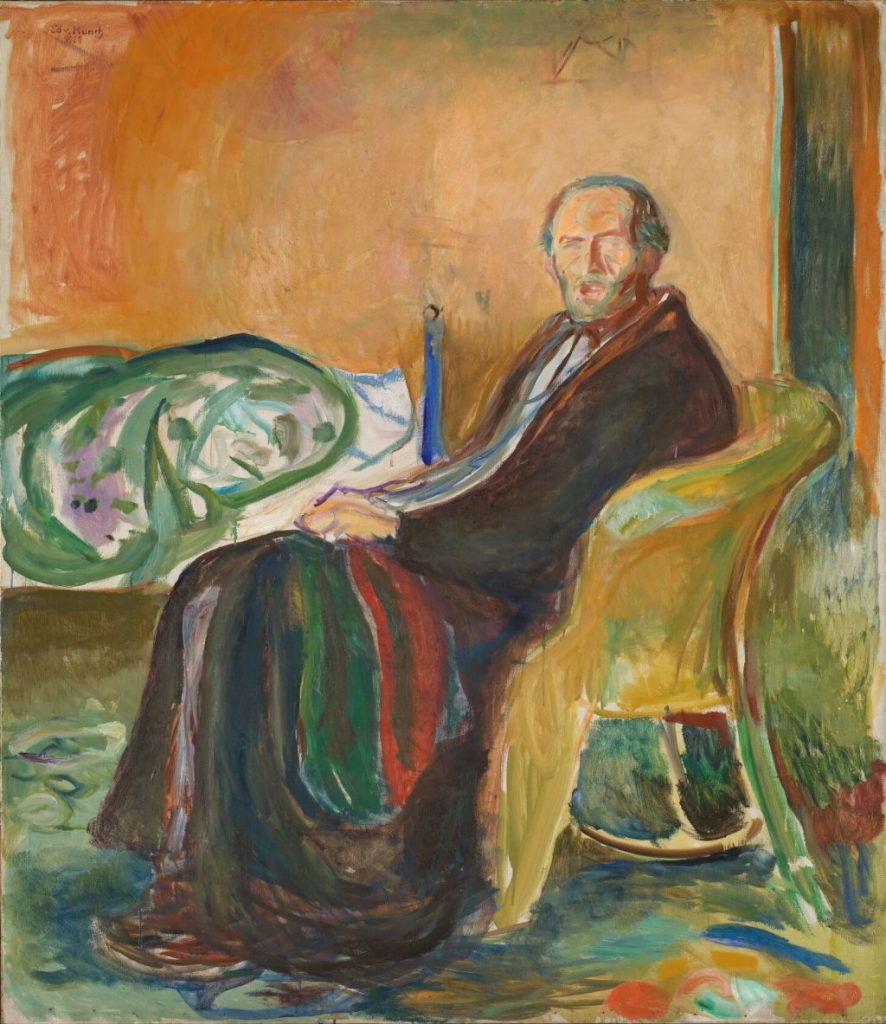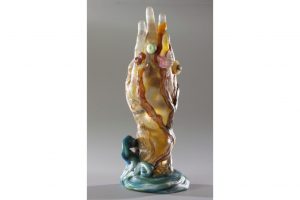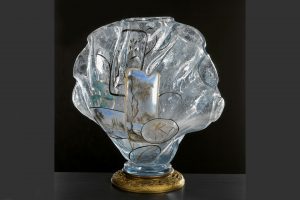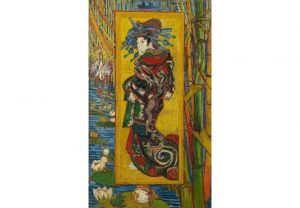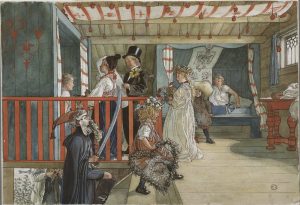The Scream is one of the most well-known paintings in the world. It is believed that Munch drew inspiration from his own experiences for this iconic work. One evening at dusk, as Munch was walking along the street of Christiania (present-day Oslo) with a view of the fjord, he was overcome by extreme anxiety when he saw the sky turning blood-red. He felt a profound sense of unease and heard nature itself let out a “scream.” Through a process of trial and error, he worked to create a piece based on this experience, giving birth to the striking figure desperately covering its ears and facing forward. The Scream is a work frequently seen on social media and television, Munch himself created several versions of it in both paintings and prints. In 2018, a version of The Scream (from around 1910?) from the collection of the Munch Museum in Oslo came to Japan. However, the version described here was created in Germany earlier, characterized by its rough lines using tempera and crayon, vividly express a sense of urgency and intense emotion.
The National Museum, Oslo, Masterpieces by Edvard Munch
Browsing Public Domain Artwork of World Museums
No.009
The term “public domain” refers to public intellectual property that is not copyrighted. There are art museums around the world that offer open online access to works in their collections. Here, we highlight works that have entered the public domain and redefine the appeal of such collections.
A series exploring art museums from around the world that have made their collections, which are now in the public domain, available online. In the ninth installment, we feature works by Norway’s prominent artist, Edvard Munch, from the collection of the National Museum in Oslo, Norway, which was reopened in June 2022. Researcher Yusuke Kameyama, who was a curator at Kawamura Memorial DIC Museum of Art until January 2024, will provide commentary on three of Munch’s works, including the famous The Scream, allowing for a multifaceted appreciation of Munch’s artistic career.
Edvard Munch The Dance of Life 1899-1900
This scene depicts a bright summer night on the beach, with moonlight shimmering like drops in the sea. It evokes the landscape of Åsgårdstrand, a summer retreat near Oslo that appears in several of Munch’s paintings. Munch often visited this beautiful place, using it as a stage for the drama of life. In the center, a man and a woman are dancing, holding hands, and the curves of the woman’s dress and hair create the impression of the two merging into one. On either side, two women in white and black dresses stand, symbolizing youth and old age. Munch frequently explored themes like illness, death, love, and jealousy in his paintings and considered compiling them into a series he referred to as the “Frieze of Life.” The Dance of Life is a significant piece within this collection, depicting various aspects of human existence within a single painting.
Edvard Munch Self-Portrait with the Spanish Flu 1919
This self-portrait depicts Edvard Munch himself during a bout of the Spanish flu. The Spanish flu was a global pandemic that occurred between 1918 and 1920, affecting over a million people in Norway. Munch, who was in his fifties at the time, also fell victim to the virus. The depicted Munch is shown wearing a thick jacket draped over his shoulders, and his face appears haggard. The bed in the background is unmade, suggesting that he may have just been resting. His image reflects the toll the illness took on him. Throughout his life, from his youth to his later years, Munch repeatedly created self-portraits. This may have been a way for him to confront and objectively analyze his own existence. Even in the face of the Spanish flu, he did not avert his gaze and continued to use his art to express his experiences. This sincere (or perhaps shrewd) commitment to translating his experiences into his artwork, even in the face of a devastating illness like the Spanish flu, remains a fresh and powerful testament to his dedication as an artist.
Japanese original text: Yusuke Kameyama
Translation: Kae Shigeno
The National Museum in Oslo, Norway
It was established in 1837 as the first public art museum in Norway by the Norwegian Parliament. It reopened in June 2022 after a renovation. Three of the previously scattered national art museums in Oslo (classic and modern art, contemporary art, decorative arts and design) were integrated all under one roof, resulting in a collection of more than 400,000 items, making it the largest national art museum in the Nordic countries. A new addition is the Edvard Munch room, which exhibits a valuable collection of works that form the core of Munch’s artistic career.
https://www.nasjonalmuseet.no/en/
Mailing address: Pb. 7014 St. Olavs plass N-0130 Oslo, Norway
Admission: Adult: 180 NOK
Senior (67 years of age and above): 110 NOK, Under 25: 110 NOK, Under 18: Free


